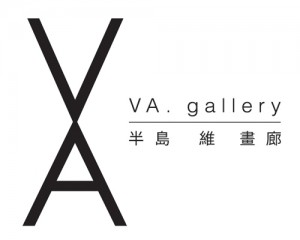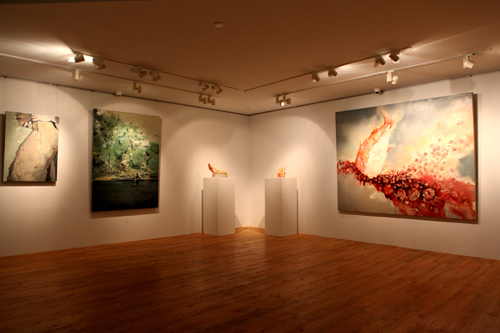AMEISE, AMEISE – WU DI’S SOLO EXHIBITION (solo)
“AMEISE, AMEISE”, what does this title mean? It was purely a name with no special meaning. Does WU DI have any meaning? No. It is just a name. When browsing a lot of works hurriedly and seeking for the meaning of each one, WuDi’s works will pose more questions to you. After appreciating her works, you will find it.
This exhibition, as her first solo exhibition, will show more than thirty works during 2003 to 2009 including multi-media, installation and sculpture. She cares about the outside world, like unhappiness, violence, human beings and animal. All these experiences not only make her feel in anguish, but also make her feel that all the pains come from the outside world. She wants to kill off violence, to suffer for happiness. The heart in her thin body is brave but of pity. Her attitude is negative but also with a faint hope.
Wu Di, the aquarius girl does not have answer to the questions in her works, neither you and me, because we are not mature enough to have the answers.
Wu Di’s first solo exhibition now at 798
Young artist Wu Di will show her first solo exhibition, “Ameise, Ameise” (German for “Ant, Ant”), runs from June 5 to July 4 at Pifo New Art Gallery in the 798 Art District. About 30 pieces made between 2003 and 2009 of mixed materials are on display.
Taken from Chinese rock singer Zhang Chu’s song “Ant, Ant,” the name of her exhibition does not necessarily need to be related to her works, Wu told China.org.cn. “When people enter [the exhibition] with the name in mind, they probably will expect to see something similar to ants, but they will find there is no such image in my works,” she said.
And this is exactly what Wu wants to happen – break viewers’ habitual expectation of the secular world.
“Who says the name must be combined with its owner?” she said.
A white cement cube with a cross-shaped hole on one side stands in the middle of Pifo’s exhibition hall. Inside the cube is a transparent table, a white wooden chair and a 3-D mimic of God’s hands in Leonardo da Vinci’s “The Last Supper.” Another work, “Cloud,” hangs on a wall and symbolizes the circle of life. On top of the cube, red neon letters flash the phrase “GOD LIVES UNDER WATER.” On an opposite wall, painted in black, a sentence reads, “I SEE THE MOON AND THE MOON SEES ME.”
Wu said all her works come from her life experiences, but she doesn’t mean to tell viewers what they stand for because she believes people have their own experiences and feelings. Her works consist of various social and natural elements – such as life, death, war, animal protection, abortion and religion – for people to explore.
A STEADY HEART IN VARIOUS STYLES – ON WU DI’S WORKS
by Wang Xinyou
Artists are anxious, for different reasons.
It is because that the world to each person is different, so we have millions kinds of happiness and sadness.
When Wu Di is in tears, sadness could never be found on her face. And the happiness for most people is not joyful to her. She is anxious about world and life.
She is of subtle and refined sensibility, passion and all-embracing love. With doubts to life, she is more willing to talk about ruthless issues optimistically. Then we have a chance to find Wu Di’s emotion and feelings behind the dramatic changes.
It is real perception, driving Wu Di to explore addictively. Even in night, she strides ahead with the pursuit to warmth.
If we take Wu Di as an unreasonable girl than an artist capricious in style, then all her works are the process of her seeking herself in the external world and her exploration of life in her vision world. She raises doubts and finds answers to them.
But she never satisfies with the answers because she is out of regulation. The emotion fragments seem like having no relation with each other, and no pattern could be found on their formats, however they are connected in a way surpassing logical emotion. Wu Di concentrates on human nature, looking at the world with a cold stare. She is translating among different roles, crying for them with soul.
All the works with dramatic changes are from the same heart. Wu Di is an artist wearing an invisible cloak and a creator reflecting and thinking through changing and oversetting. She never puts restriction to her creation or sets symbols. She is good at expressing her emotion through senses of plane and tridimension, and she knows how to hide herself behind her works perfectly.
Like god, we could see various external appearances, but the faith under them isthe same.



